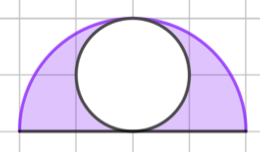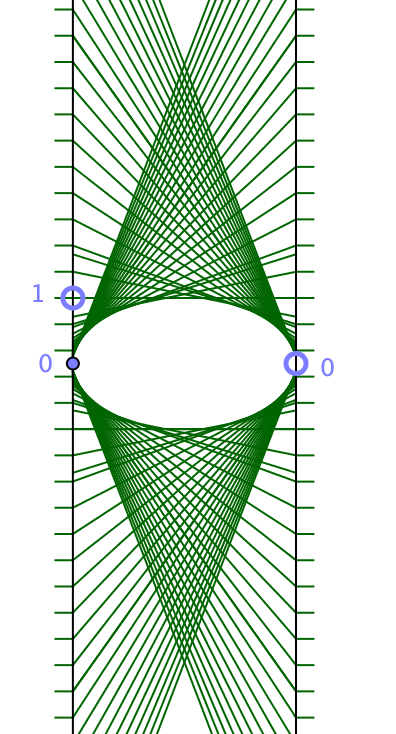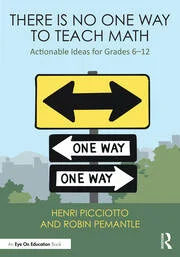Blog Posts
Links to the most recent posts on my Math Education Blog.
Making Struggle Productive
To learn important and difficult ideas requires students to engage intellectually — thus the concept of "productive struggle". However there are many obstacles to implementing this effectively, both in the culture and in ourselves. Providing explanations that students cannot hear does not increase their understanding. Likewise, always withholding teacher help may not yield the intended result, as it often leads students to not struggle at all, productively or otherwise! I discuss this in a blog post which could frame a worthwhile conversation with your colleagues.
Asilomar Report 2024
The annual gathering of the Northern Section of the California Math Council has gotten smaller since Covid, and there have been fewer math-focused sessions — the emphasis is now almost exclusively on pedagogy. This year, I presented many ideas from my book, focusing on how to reach the full range of students. I write a bit about the book at the end of this newsletter, and you can find links to the presentation's slides and handouts on my Talks page.
I also attended a couple of interesting sessions. Grace Kelemanik shared a couple of techniques for classroom discussion to be used before and after students work on a problem. Frank Cassano and Anya Sturm presented an approach to instruction that highlights argumentation and problem solving by including explicitly labeled sections in daily class work, homework, and assessments. They shared this excellent strategy in the context of interesting Algebra 2 material, but it's a department-wide policy. Read more about all this.
Function Diagrams
A function diagram is a parallel axes representation of functions. I learned about this idea decades ago at the Asilomar conference, and developed quite a bit of instructional material around it. Unfortunately, there is little time to pursue this in overstuffed curricula. In this post, I link to my top four activities in this domain, the ones I was able to squeeze into my high school classes. (There is a lot more function diagrams material on my website, which I have shared with teachers in summer workshops and Math Teachers' Circles. Of special interest is the dual relationship between function diagrams and Cartesian graphs: points become lines, and lines become points!)
MathEducation.page
Visit my website!
Geometric Puzzles
My website includes a large section dedicated to geometric puzzles and their use in the classroom. On that section's home page, I link to materials I created about tangrams, polyominoes, pentominoes, supertangrams, rep-tiles, and a half-dozen other visual challenges. I also link to a dozen free-to-download books. To navigate through some of this, I include an article (Geometric Puzzles in the Classroom) and the outline of a possible instructional unit. What is new:
- Squaring Pentominoes: a puzzle set using scissors and one-inch graph paper which requires a stealth application of the Pythagorean theorem.
- Geometric Puzzles for Prospective Math Teachers: a chapter in an upcoming book intended for mathematicians and professors of math education who teach geometry to preservice teachers. It contains detailed explanations of how to incorporate puzzles in a geometry course, including many links to my website: tiling, transformational geometry, symmetry, the geoboard, Geometry Labs, and of course geometric puzzles.
π Day
Possibly useful for π Day, a new addition to the site: Leonardo's Areas. This is a bit of a trick, in that in spite of involving many circles, some of the areas do not involve π! This one does:

- Other options on 3/14:
- Circle area (animation to explain `A=πr^2`)
- π for regular polygons?
- Taxicab π
- The last two links are extensions of Geometry Labs 9.6 and 11.8.
Stats, Tweaks, and Updates
- Some popular pages on the site in the past five months, in order:
- Virtual Grid Paper
- Virtual Pentominoes
- Virtual Geoboard
- A New Algebra (1993!)
- Proving Pick's Formula
- For a Tool-Rich Pedagogy (many links)
- Fraction Arithmetic
- Geometry of the Parabola
- My books
- Virtual Base-Ten Blocks
- Some pages I tweaked since the last newsletter:
- Math Education Consulting
- Virtual Lab Gear
- Big-Picture Planning
- Stairs (a slope applet)
- There Is No One Way
- Some launch pages I updated:
- Annotated Site Map
- Site Map by Grade Level
- Lab Gear (algebra manipulatives)
- Manipulatives
- Rate of Change
- Precalculus
- Comprehensive Site Map
- My résumé
- The Pythagorean theorem
- About Teaching


